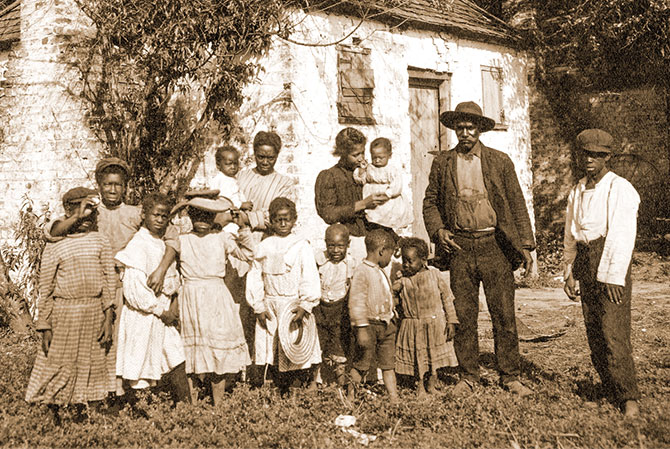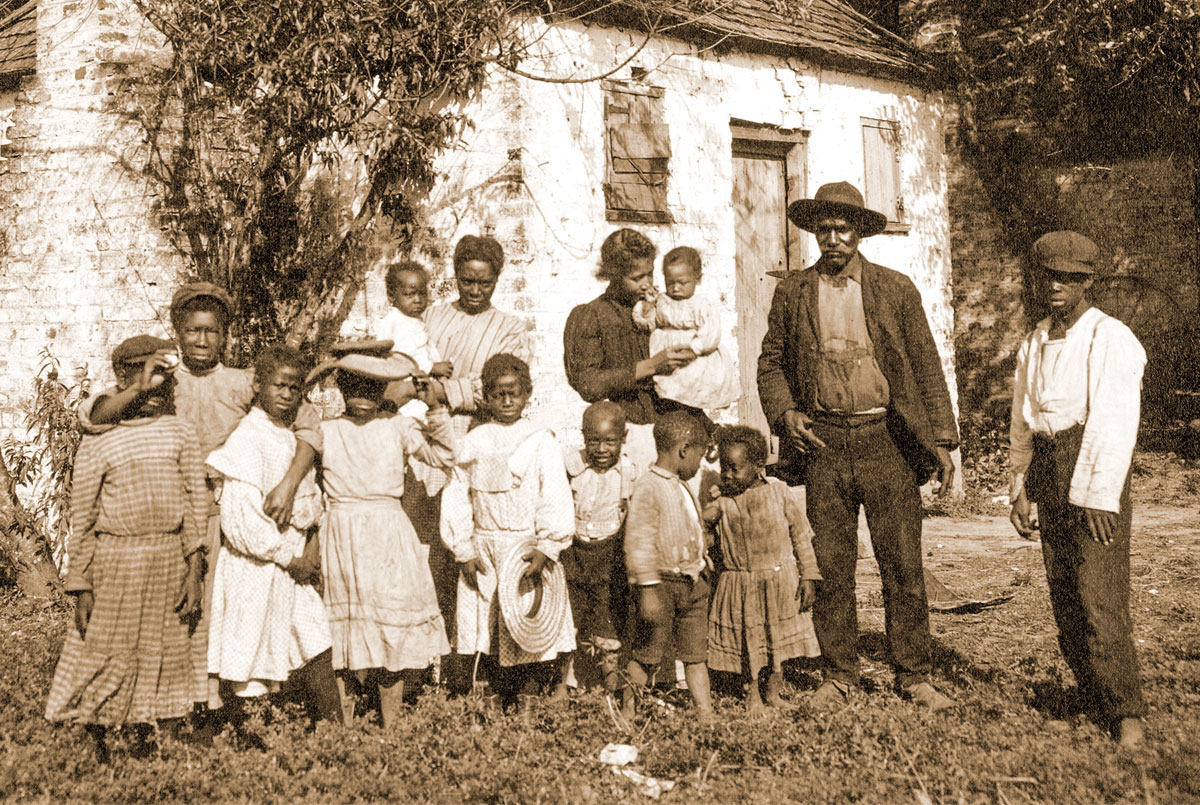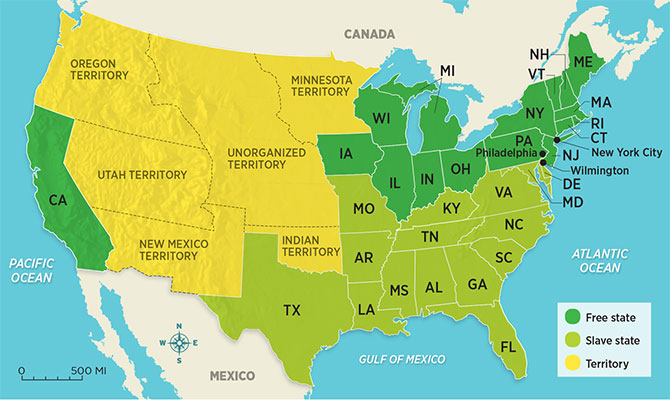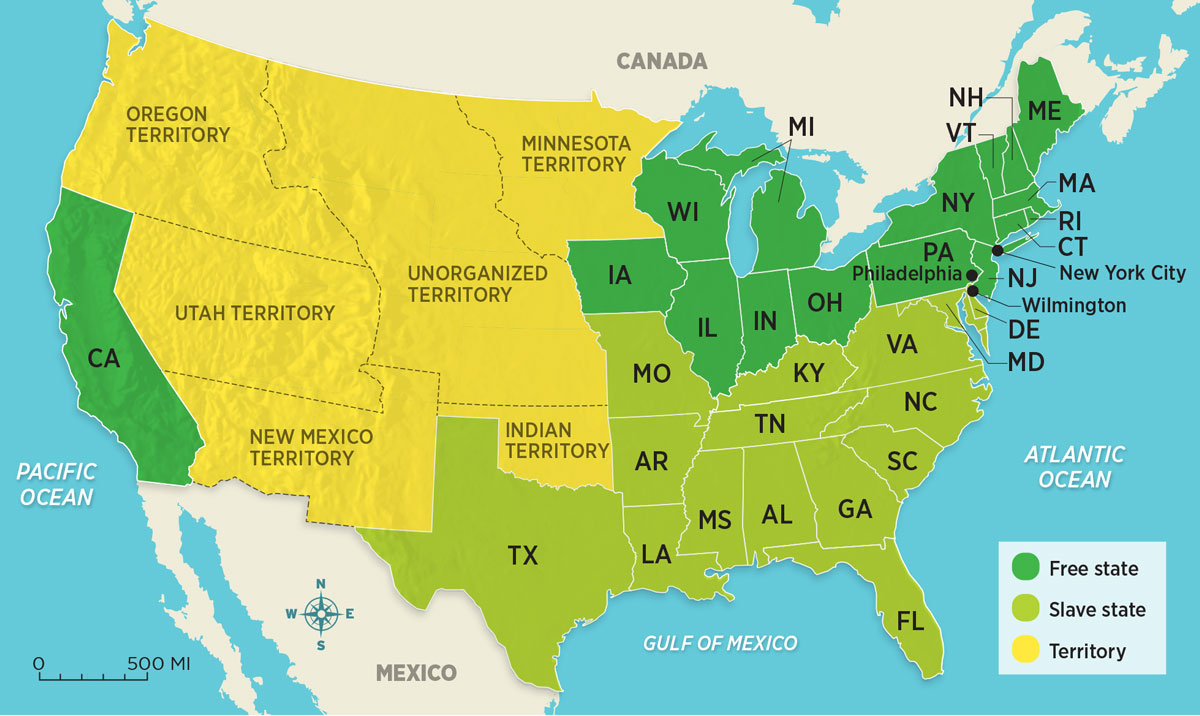Narrator B: Later that same day, Tubman knocks three times on the back door of a Quaker’s house in Wilmington.
Quaker woman (nervously): Quick, take this broom and get busy sweeping the porch!
Narrator C: Minutes later, two slave catchers leave the house.
Quaker woman (calling after them): Have a pleasant journey!
Slave catcher: Thank you, ma’am. Remember, if you see a pack of runaway slaves, get word to us. There’s a reward on their heads. (They leave.)
Quaker woman (to Harriet): That was close! You can’t stay here. Another slave catcher is upstairs, sleeping. I couldn’t refuse them lodging or they might suspect the truth: that this house is part of the Underground Railroad.
Tubman: But we need your help! There are 12 of us hiding out in that swamp.
Quaker woman: My husband will find you when it’s safe. Now go!
Narrator D: The next morning, the woman’s husband drives his wagon to the Pennsylvania-Delaware border. Tubman, disguised as a man, sits beside him.
Quaker man: I found you in that swamp just in time! The slave catchers were getting close.
Tubman: And we were getting pretty hungry, and cold too.
Quaker man: Well, here we are.
Tubman: Everybody out! This is the Pennsylvania border!
Narrator E: Tubman jumps down and opens a hidden door in the bottom of the wagon. The other escapees scramble out.
1st slave: It sure was crowded in there, all of us squeezed in.
2nd slave (looking around): I can’t believe it! I’m free! I’m free!








